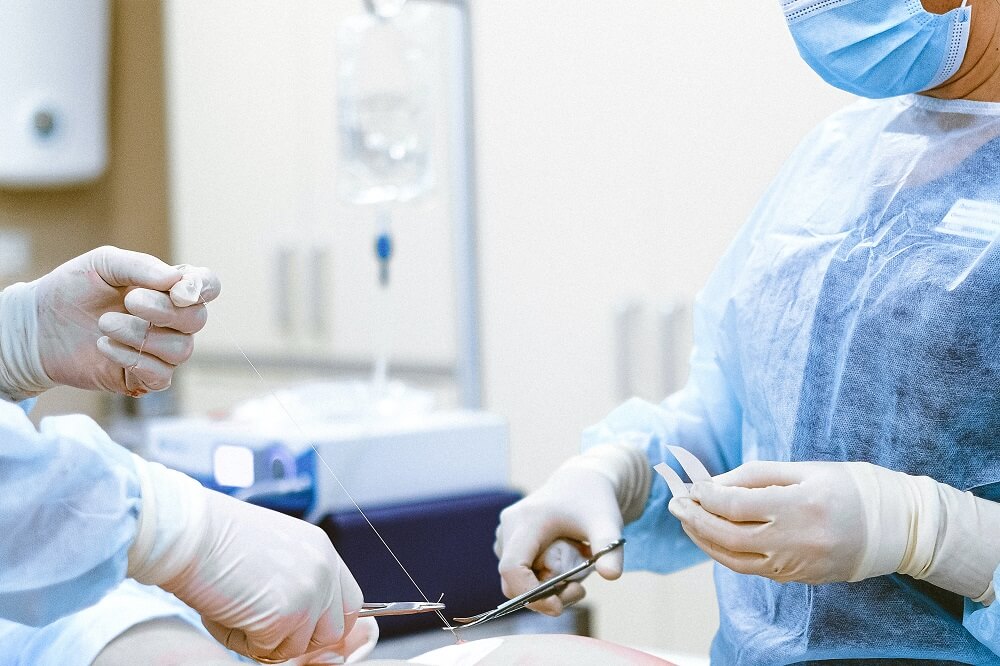A disposable apron is a garment with overlapping joints on either side of the neck or the waist. Medical personnel use aprons to protect them against potential hazards within the hospital environment. Risks include HIV, secretion, excretion, body fluids, pathogens, bacteria, allergies, vomiting, hepatitis C and many more.
A disposable apron is a type of protective clothing shield. It uses flexible and ultra-lightweight impermeable plastic that consists of either a single or double layer. Hospital personnel, especially lab technicians and nurses, regularly use disposable aprons. Their primary purpose is to break direct contact between the skin and the blood or body fluid. This lowers the risk of infections or further spread of infection to other patients. Hence, it is an essential component and must-have piece of Personal Protective Equipment for all health/medical personnel.
There are two types of Apron to consider.
• Disposable apron
• Reusable apron
What is the advantage of a disposable apron? And why consider using it over a reusable one?
Pros
It is convenient and versatile for a variety of uses.
You can use it freely without worrying about dirtying or damaging it since it will only be used once and then disposed of.
The impermeable plastic layers offer maximum protection against contamination and infection when working within a hazardous environment.
They are efficient and inexpensive.
They are inexpensive, they can be stocked in bulk. This is an ideal option for site visitors, guests, public health personnel, and high-risk patients.
Cons
Single use items tend be expensive over time.
They are hazardous to the environment and ecology because they are non-biodegradable.
Why choose a reusable Apron over a disposable one?
Reusable aprons are long-lasting because they are made from high-grade material. Hence, they have high resistance against wear and tear.
Despite the initial expense, they are more cost-effective than disposable aprons in the long run.
They have high resistance against water or moisture.
They are washable and environmentally friendly.
What are the factors that affect the quality of disposable plastic aprons? And, how do they affect patients’ health?
Before you purchase any disposable plastic apron for medical purposes, it is critical to consider its quality to avoid risking your life and the patient’s life. You should keenly observe the following features because they are the major factors that affect the quality of a disposable plastic apron. They include:
Level of Protection. {Number of layers}
Level of protection refers to the number of impermeable layers the disposable apron is made of. Therefore, it is preferable to settle for one with multiple layers to offer maximum protection against HIV, bacterial or pathogen infection, penetration of body fluids, secretion, sweat, etc. However, if you settle for a product with a limited number of layers it will not be ideal for medical personnel. This will be detrimental to the patients’ health because any contact will increase the risk of infection.
The size
Another factor to consider is the size of the disposable apron. Especially its proportionality to the length of your arms. Wearing a disposable apron that does not fully cover your arms increase the risk of contracting diseases. Either from health worker to patient or patient to health worker. This is because the exposed part of your arm may come into direct contact with the patient’s body or any hazardous substances within the hospital environment.
Material
The type of material used for making the disposable plastic apron also plays a vital role in its quality. This is because there are materials that are not skin-friendly. Instead, they pose sensitivity risks to both the patient and the health worker. This can cause discomfort to health personnel as well as the patient. The quality of the material is important because poor quality material increases the chance of transmissions. Body fluid, secretions, excretions, bacterial and fungal infection risk penetrating non-intact skin or mucous membranes during care and invasive procedures.
Wrapping
Sterilization is the deactivation or killing of all the living microorganisms on, or in medical equipment. According to the rules and regulations of the WHO, medical equipment must be sterilized to protect patients and medical personnel. The wrapping of a medical product may affect the duration of sterility. Thereby rendering it useless or less effective to infections within the hospital environment; thus leading to infection.
A disposable plastic apron is vital piece of personnel protective equipment that should be in every home or hospital. However, it is important to choose the one that is suitable for you specific requirements. Care should also be taken when disposing of them to make sure they dont impact the environment.
Place your disposable apron order today
Order your disposable aprons today. We have an extensive range of stock to suit your exact requirements. For more details please contact our friendly staff who will be happy to discuss suitable options.

